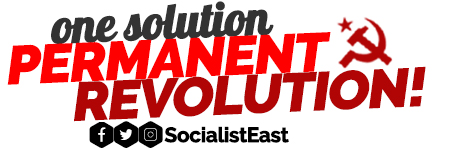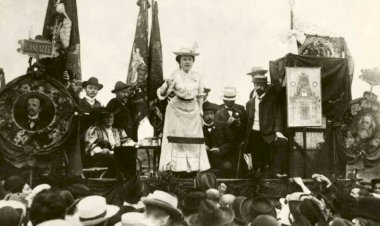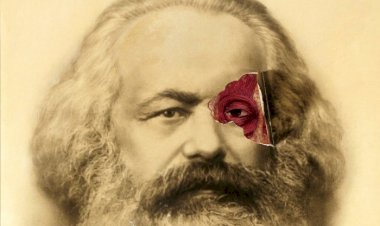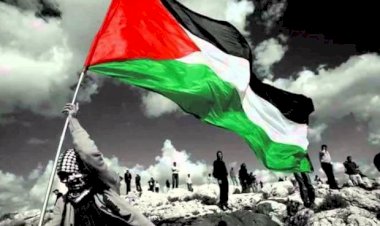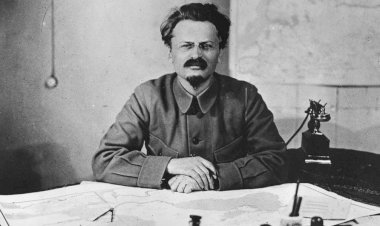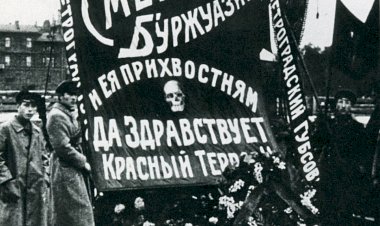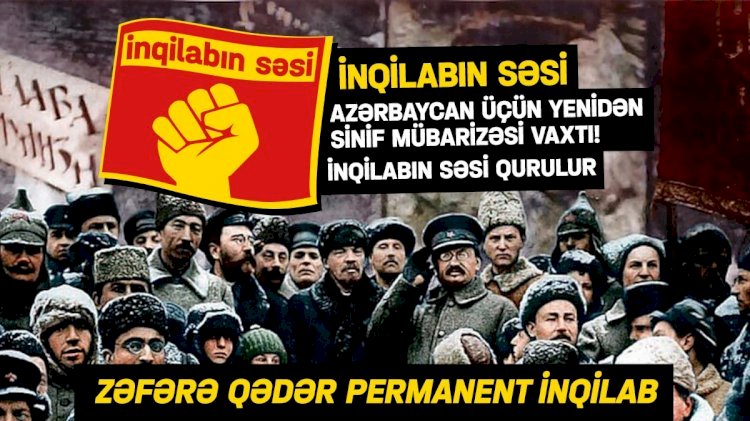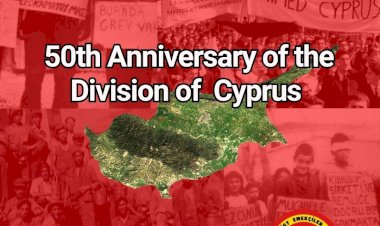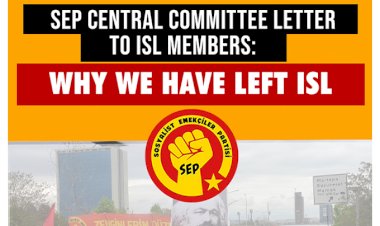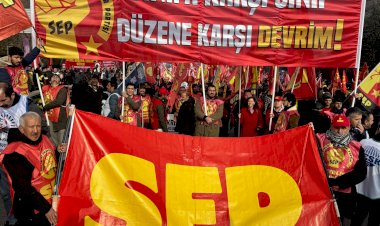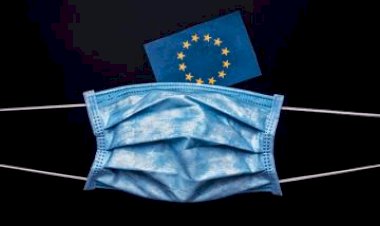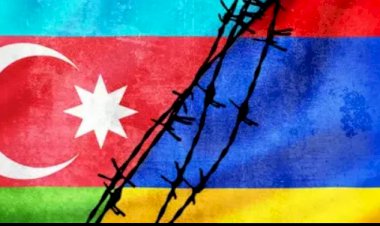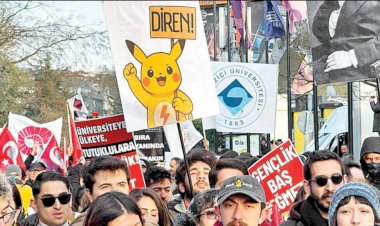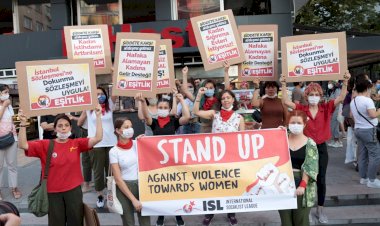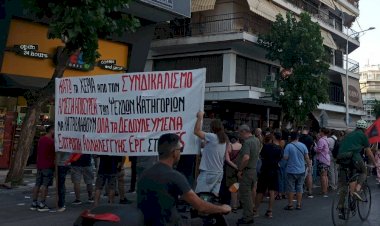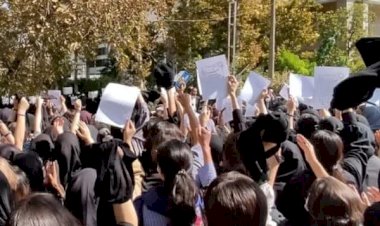On The Day of Victory- V.U. Arslan
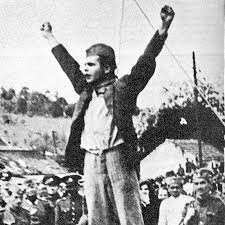
In the Second World War, Nazi Germany signed a surrender agreement on the night of May 8, 1945. In Russia, the calendar passed was turning to 9 May. The local time difference becomes an excuse for different Victory Days in the Cold War competition: "Victory Day" is celebrated as May 8 in the West and May 9 in the East.
Victory Day for Putin
Today, The Day of Victory is mentioned in many countries, but in Putin’s Russia, it has a special parade. On this national day of pride, the military parade with troops, tanks, missiles, commandos is very important. The fact that it can not be celebrated this year due to the pandemic made Putin very upset, but nevertheless, there was an air show of 75 warplanes in Moscow
The flag of the Soviet Union is raised at Victory Day parades, which draws attention to Russia's power and claim in world politics. It is well known that former KGB chief Putin never likes the October Revolution. Putin accused Lenin of “ planting an atomic bomb under Russia" at an event about Lenin in 2016. Obviously the October Revolution in Russia and the operation to discredit Lenin were accelerated, Putin wanted to underline the gap between him and Lenin. Lenin's attempt to apply self-determination for the oppressed nations and his efforts to world revolution meant dynamiting Russia. “We did not need a global revolution.”[1] Of course, Lenin was an internationalist communist revolutionary, and the October Revolution was against chauvinist monsters like Putin. A year later, in the 100th anniversary of the October Revolution, Russian state television screened “Trotsky”, which is the most expensive series in the history, that blackens the October Revolution over Trotsky, slanders Bolsheviks, especially Trotsky. Putin continues to tear into Lenin as he gets the opportunity. In December 2019, Putin again targeted Lenin: “The state structure fabricated by Lenin undermined the Russian state tradition. We have to lean on what we have, so to the Russian people.”[2]
But obviously for Putin, the history of the USSR is changing after Lenin. In today's Russia, the Stalin era is glorified as brilliant and heroic days in which Russia became a superpower. This is the reason of the contradiction of the Soviet flag in Victory Day celebrations that stems from the fact that there are two different USSRs. The October Revolution was the work of Russian enemies and, by the way, Jews (Trotsky), Lenin had dynamited Russia. The powerful leader Stalin, on the other hand, made everything back in place!
Who Was the Real Victorious?
So, who was really victorious? It can easily be said that the winner of World War II was imperialist capitalism. The 20th century came with the great economic crisis and the horrors of the imperialist war, and the socialist revolution emerged from this brutality. If the revolutions that followed the October Revolution of 1917 in Europe (for example, the German Revolution) were successful, the imperialist capitalist system would be removed from the world. Although this wave failed, the ruling classes could not escape the revolutionary nightmare. The Great Depression of 1929 brought the revolution to knock on the doors again and again. The capitalists finally handed over the key of Germany to the Nazis.
On the other hand, anyone with a class consciousness should know the part of Stalinism in the Nazis coming to power. It is no secret how the German Communist Party, which has hundreds of thousands of members, and the massive German labor movement, has surrendered to the Nazis without resisting. Instructions from the supreme leaders in Moscow ordered the KPD to fight the German Social Democratic Party SPD, rather than the Nazis. When the Nazis came to power, they would not be able to achieve anything and at the next election, power would come to KPD![3] This nonsense paralyzed the German labor movement, and paved the way for Nazis and the labor movement surrendered to the Nazis without resistance. The size of the fiasco is better understood if we put aside the results of the last free elections held in Germany, that the voting rate of KPD in Berlin was 38%, however, in the 1928 elections, the Nazis' voting rate Berlin was only 1.6%. According to the KPD, the Nazis were "honest warriors against the hunger system”[4]
Let's not extend this issue too much. The imperialist system had to bring even the Nazis to power with the help of the Stalinists in order not to experience another 1917. As a result, at the end of World War II, the capitalist system survived its big crisis and finally rode out the storm. Then, an era of big economic growth are and the American dream starts. Considering that the USSR was fallen 45 years after the war, it can better understood how great success was the 1945 turn for capitalism.
How Revolutions of the 1945 were Betrayed?
As we said above, the imperialist capitalist system rode out the storm, but this success required the danger of revolution to be eliminated. If we want to fully understand the 1945 turn, we need to explain the last part of the system's crisis:
By the end of the war, there were revolutions in many countries in Europe, as Trotsky waited with hope and the bourgeoisie with fear. Partisans organizing resistance against the Nazis in Europe were the natural candidates for political power as an organized armed force. In the face of the fascist invaders, the bourgeois were either passive and inadequate, or in many cases open collaborators. For this reason, although it differs from country to country, the bourgeoisie fell from grace after the war that it was weak and impotent. In contrast, the partisans had the extraordinary love and dignity of the people. In Italy, they were the partisans who hung Mussolini upside down, and those who defeated Nazi armies were the partisans of Greece and Yugoslavia. In France, again, the partisans had a great influence, the working-class movement was very strong, and the revolutionary situation prevailed in the country at the end of the war.
To get out of this trouble, Stalin came up with a rescue plan. Revolutions had to be drowned. Stalin did not want revolutions as much as Churchill and Roosevelt. The secret was that, unlike the Spanish Civil War, the partisan resistances were under the strict discipline of communist parties. And the CPs were 100% under the discipline of Moscow. As a result, the CPs worked hard to help the partisans not develop any perspective of power and made partisans drop their arms and hand power over to bourgeoisie and help bourgeoisie back to ordinary life. Tito was the only partisan leader who rejected this betrayal and took power. Stalin had made a deal with the last Yugoslavian King Petar, who was the ally of Britain and had tight relations with the fascist collaborative Chetnik gangs. With pressure and support from the masses, Tito broke with Moscow with a telegram. As of this move, Tito would be the most demonized character by Stalinist slanders after Trotsky. While Mao was walking to power, he swept out the elements close to Stalin in the CCP and opened his way, but he still knew how to take the support of the USSR because Stalin did not want to lose the big China to the US during the Cold War. But it was not too long that the ruling CCP declared the USSR as the main enemy. In these separations, nationalist state interests were determinant rather than principles they rely on. As a matter of fact, Mao attacked the USSR from the left throughout the 1960s, and established an anti-USSR alliance with the USA in the 1970s.
Yalta and Loyalty of Stalin

The winners of World War 2, Stalin, Churchill and Roosevelt, came together many times to draw the borders of the post-war world. Between November 1943 and August 1945, the borders of the new world were drawn at Tehran, Moscow, Yalta and Potsdam Conferences. Stalin was content with Eastern Europe. The USSR army had already advanced from Romania and Bulgaria to Berlin. There wasn't much left for the US and Britain to do for Eastern Europe. But they actually received a lot in return for Eastern Europe. The future of Greece, Italy and France could all be shaped completely differently. The ghost of the revolution of 1917 could come back that was the real thing frightened the imperialist capitalists. But Stalin even left Greece in the hand of the partisans to the Nazi collaborative bourgeoisie and fascists. This was a terrible betrayal to the partisans defeated Nazis and the misery they face was tragic. During the fascist occupation, 550 thousand people lost their lives, which corresponded to 8% of the total population, 1.2 million people were left homeless. 19 thousand of 55 thousand partisans (andarte) fighting with the Nazis lost their lives.
Communist parties were also very moderate in post-war Italy and France; the cops did not need to block workers, the CPs provided this by themselves. In Italy, Communist Party leader Palmiro Togliatti was sitting ob the chair of the Ministry of Justice in the government of the National Union. Togliatti was even in consultation with the Vatican in negotiations on the country. The Communist Party of France (CPF) also had two ministries in the De Gaulle government. CPF leader Maurice Thorez was chanting the slogan "one state, one army, one police.” The party did not limit itself by making statements to stop the ongoing strikes, but it physically intervened in the factories to end them. In contrast, the Trotskyists, who advocated the strikes to continue, were not just beaten, but also their leading members were killed. Stalinists had no tolerance for opposition. In the 1945 elections, CPF was the first party with 26%, and the total vote of the CP and the Socialist Party was 50%. De Gaulle immediately gave the ministries of industry, economy, labor and more, to the CPF in the new cabinet. In return, the CPF supported all of the dirty work of the France’s imperialist policies and the colonial war in Vietnam. These so-called “Leninists” went far beyond Kautsky.
It is clear that the bourgeoisie could not stop the working class in this way. The destroyed bourgeois order was restored in this way with the active support of the Stalinist CPs. This was Stalin's promise to Churchill and Roosevelt.
Surprisingly, Churchill recounts Stalin's promises in sharing agreements. It is the class position of the Stalinist bureaucracy in the USSR, which Churchill did not understand. The Stalinist bureaucracy took action to stop any revolution after Lenin's death. Revolutions, popular uprisings and ideas arising from them and the atmosphere of freedom were what frighten the Stalinist bureaucracy. The "Lenins" of these new revolutions could never be like the loyal officers of Moscow? On the contrary, both the revolution and the leaders of the revolution would inevitably question, criticize the USSR and shed light on inequalities and pressures. For this reason, the USSR saw enough to be the powerful actor of the new status quo, with Putin's mindset right after the Second World War, and helped Western capitalism to stand up. Revolutions, on the other hand, were stabbed from behind, as in Spain and many other countries.
The Survival of Capitalism
After the war, revolutions were prevented and the system stabilized, the world market was reshaped according to the rule of the US supremacy. US imperialism entered new markets with unprecedented financial and political instruments around the world.
Facts such as the explosive economic growth in the post-war US economy, the Bretton Woods system, the Marshall Plan, increasing public spending, which meant to calm the working class, and the worldwide development of the productive forces constituted the economic aspect of entering one of the most prosperous periods of capitalism.
All this brought about the formation of the welfare state that provided the basis for the legitimacy of capitalism (the liberal parliamentary system) in the West. Capitalism has left that the most difficult period ever behind after the Second World War, by gaining new fortunes for itself. This process lasted until the struggles of the 1960's.
[2] http://www.diken.com.tr/putin-yine-lenine-yuklendi-rus-devletinin-altini-oydu/
[3] These statements take place on September 15, 1931, that is, one day after the elections showing Hitler's big rise, in the publication of KPD's Rote Fahne. Similar thoughts are expressed by the MPs from the German Parliament and this perspective is presented to all of Germany.
[4] https://www.spiegel.de/international/germany/how-the-nazis-succeeded-in-taking-power-in-red-berlin-a-866793.html
